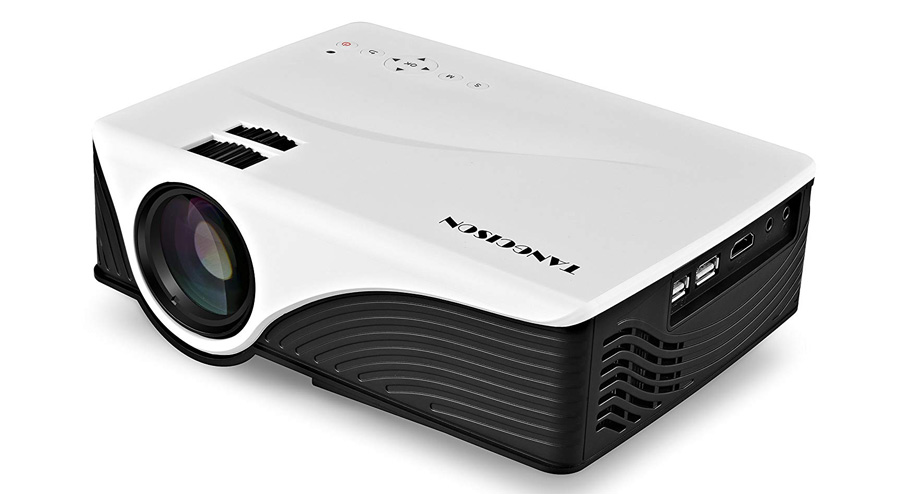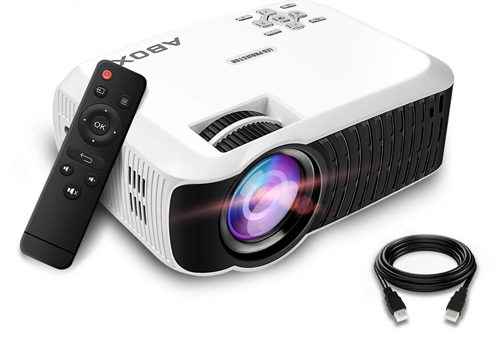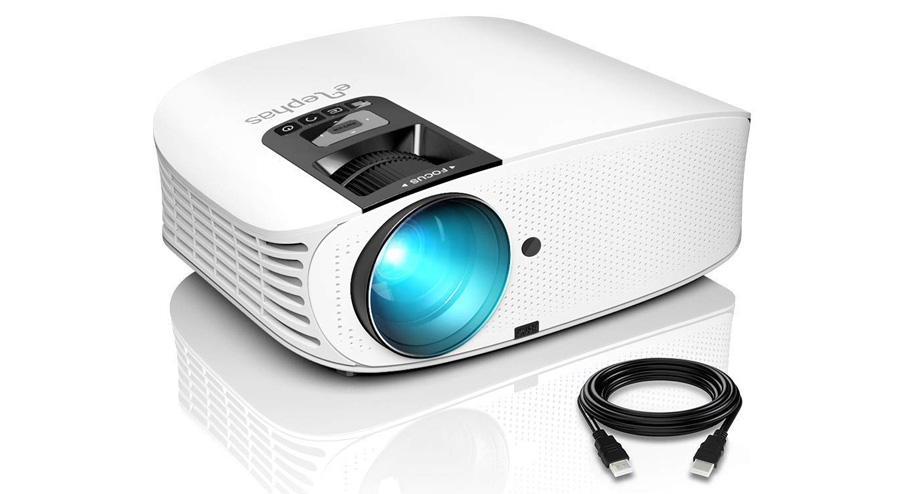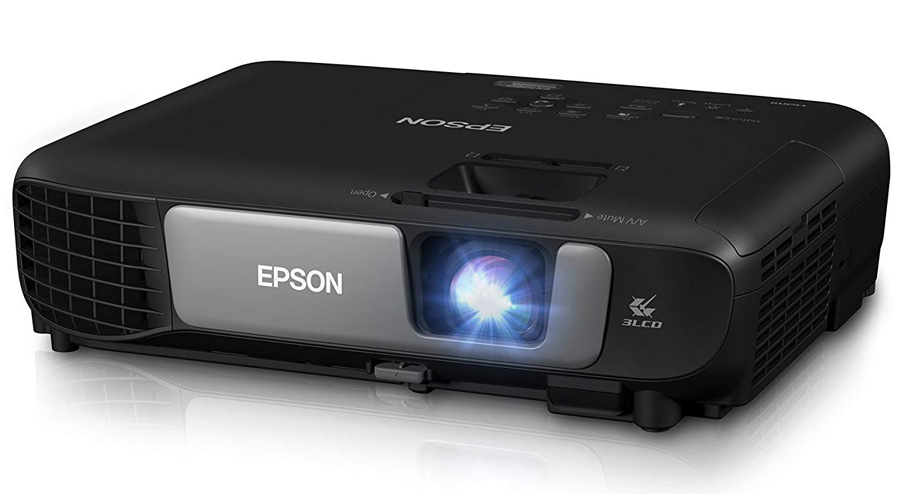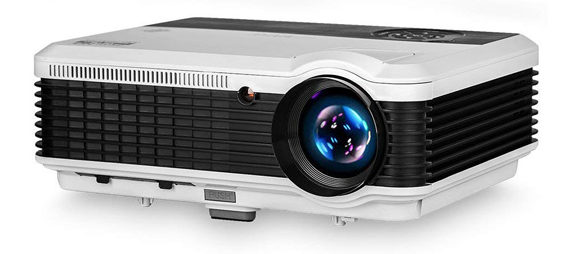Let’s face it: whether you’re on vacation or giving a presentation, you’ll need to project something during daylight at some point in your life. PowerPoint presentations, movie night, and picture slideshows are no longer be contained to the darkness. In a world of rapidly moving people with rapidly moving schedules, you sometimes have to have a meeting in bright daylight and can’t always rely on ambient light.
Therefore, your projector should be able to handle your needs with a decent contrast ratio. Whether you’re inside or outside, projectors with high-lumen capacity will be able to provide a better image quality because of their boosted brightness. Therefore, even if you don’t plan on using your projector screen outside, you should opt for a projector powerful enough for daylight anyway—just in case you ever need it. It just makes the most sense.
To help you out with your decision, here are some of the top choices for projectors for daylight viewing.
TANGCISON Home Projector Video Projector
Not only is the TANGCISON Home Projector sleek and attractive, but it’s also powerful enough to fulfill all your outdoor projector needs. The high resolution and brightness support 1080P HD video, providing clean and clear images on almost any projector screen. You can get up to 160 inches of super images whether you’re indoors or outdoors.
With this projector for home use, You can connect your smartphone or laptop to the projector with ease and even play your gaming consoles on a big picture. It’s more powerful than other projectors on the market, all while being as quiet as a laptop.
In addition, the projector provides up to 50,000 hours of video, which means that the lamp won’t need to be replaced for around 20 years (that’s just using the projector for 5 hours a day, every day). And, yes, while a dark environment will create the best viewing experience, this TANGCISON Projector is excellent in outdoor viewing too.
2019 Upgraded ABOX T22 Portable LCD Video Projector
If you want powerful viewing all while never leaving the comfort of your seat, this projector is for you. The Portable ABOX projector not only provides awesome video quality but comes with a remote too. With such a high brightness, you can watch any movie or TV show outdoors, perfect for tailgating or camping.
The projection will appear twice as bright as other LED projectors with a clear image that can go up to 176 inches. Add your laptop, TV, or tablet to the projector for the best viewing experience on the market.
Best of all, you won’t have to replace your lamp anytime soon. The bulb last for over 50,000 hours, even if you were to watch two hours of film every day. This means the ABOX Portable projector is an investment for outdoor and daylight viewing for years to come.
ELEPHAS Projector
The ELEPHAS projector provides up to 200—that’s right—200 inches of excellent picture and video. That’s incredibly high power for such a small projector. Isn’t technology great? You can easily make a theatre at home, indoors, or outdoors—wherever you want.
You get a high-power LED light source capable of projecting 720P HD up to 10 feet away. It’s so easy to change position or viewing angle. Watch anything from HDMI/USB/Micro USB/VGA/VGA with no problems at all. The LCD display significantly reduces light attenuation, give you a crisper image overall.
Whether you need a projector for outdoor movies with family and friends or giving an important business presentation, the ELEPHAS Projector has got your back, no matter what.
Epson Pro EX7260 WXGA 3,600 lumens Color Brightness
They say black is slimming, but black also provides some of the best viewing experiences too! Notice that the EPSON Pro projector is black, meaning that it will blend into the viewing space when the lights are off and be easily used when in daylight. It’s a shame that more projectors aren’t black.
Not only will the Epson Pro projector be capable of giving you high-quality picture in dark or highly-lit spaces, it can also do so at a resolution of 1280×800. Darks will look darker and light colors crisper with such an amazing 3,600-lumen performance.
You can wirelessly project from your laptop, tablet or smartphone without bringing any annoying cables with you. This would be especially handy if you’re giving a presentation and want to move about your room.
As you can see, Epson puts the “pro” in projector.
EUG 3900 Lumen LED LCD Bluetooth Projector
Want a projector that can be easily concealed behind the projector screen or easily mounted to the ceiling? Well, look no further, this 4k resolution, EUG projector has got you covered.
Connect your device easily to the projector with Bluetooth. You can stream your favorite content from Netflix, Hulu or YouTube all while getting a high-quality, incredibly bright picture. The battery lasts up to 50,000 hours with rather frequent uses, so you can binge your show for the next, say, five years and never have to worry about replacing the projector.
You get high-resolution 1280×800 picture quality with up to 200 inches in image size in this home theater projector. The soft projector’s soft light won’t fatigue eyes and the ultra-low radiation LED light is suitable to use for children and pregnant women. Because of that, you can safely use this projector with any audience member. No matter what you’re watching, you’ll be able to watch it with ease with the EUG projector.
The verdict
If you want to project images during the daytime, you know it’s hard to find a projector that’s portable enough to be used in brightly lit places and powerful enough to overcome the bright environment. Most projectors simply aren’t strong enough to handle most outdoor and daylight needs.
However, we’ve chosen some of the best outdoor projectors on Amazon to help you out with your ultimate decision. No matter what projector and projection screen you decide upon, you’ll be getting excellent, long-lasting image quality for a relatively low price. You’ll never have to be caught off guard again outdoors or in a brightly lit room.


